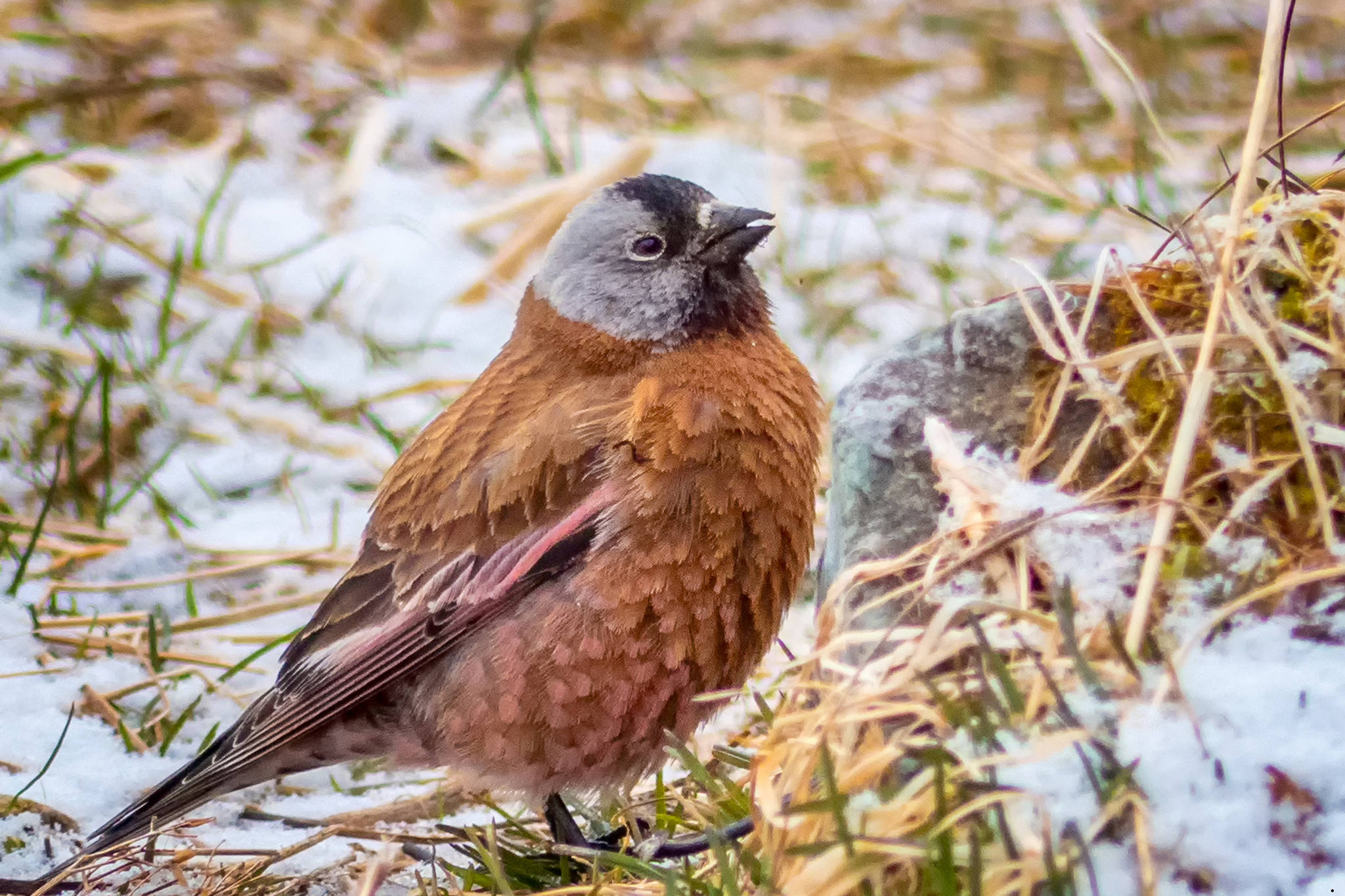By Mary F. Willson
For the Juneau Empire
After hearing about the flocks of migrating songbirds out on the wetlands, I ambled out there and found longspurs and buntings, but I missed seeing the gray-crowned rosy-finches. So, the next day, I went out there to look again. After a long lonely stroll, I finally spotted my birds — a flock of small dark birds accompanied by a couple of buntings swirled overhead and swept down into the grasses. Yes! Although they were barely visible as they scuttled about in the bent-down grasses, they were surely rosy-finches.
[On The Trails: Longspurs and buntins on the wetlands]
I don’t see them very often—they usually nest in rock alpine tundra, scree slopes, and cliffs above timberline. The breeding range extends from Montana northward through much of Alaska to the Aleutians and Bering Sea islands. There are subtle differences in plumage among birds that nest in the Interior, coastal areas or the islands — differing amounts of gray on the head and darkness of body plumage. The Bering Sea nesters are bigger and darker than the others, with more extensive gray on the head, and they can nest at sea level on those barren islands. Years ago, an invasion of gyrfalcons nearly wiped out the rosy-finch population on the Pribilofs, but the population gradually recovered. The island populations have an earlier starting time and a longer breeding season than the birds in the mainland mountains, and they often nest on buildings there.
Rosy-finches are socially monogamous and (unlike longspurs) the males are very attentive to their mates. Males don’t hold big, multipurpose territories but defend their mates and nests. The female builds the nest, accompanied by her mate as she gathers material, and the male sometimes brings nesting material to her. He guards her well from other males during the egg-laying period when she is fertile. Females incubate clutches of three to five eggs for about two weeks and their mates bring food to them while they do so. Both parents feed the chicks for two or three weeks. The chicks can fly when they leave the nest but are tended for a while by their parents.
Rosy-finches (and other finches, too) can carry food in a pair of buccal pouches, located under the tongue and extending back to the upper throat area. Both seeds and insects can be carried this way, to be delivered to mates and chicks. Like many other finches, including crossbills, rosy-finches are attracted to snow or soil on which some animal has urinated; they’ll also sometimes come to wave-washed beach logs. They are after salts and perhaps other minerals that are in short supply in many seeds. These birds aren’t the only ones: butterflies also gather on urinated soil for the same reason; we call that behavior ‘puddling.’
Meanwhile, back at the ranch: I looked out my windows one evening and saw an adult northern goshawk hopping along the bank of the pond, intent upon a female mallard that swam in a narrow channel between melting ice and the bank. All the other ducks were gone, leaving her to her fate. The goshawk jumped that mallard from the bank, then from the ice, then the bank again, or the ice, at least twenty times. Each time, she dove with a great flurry of wings and splashing water, leaving the hawk with wet feet and feathers. Back and forth she swam, quacking, in that narrow channel, always staying in the same ten-foot stretch. When I looked more closely, I could see why—she had (sensibly!) chosen a stretch that was semi-protected by branches that prevented aerial attacks and limited the hawk to pouncing from the sides of the channel. Eventually the hawk left, still hungry, but the duck continued to vocalize for some time as she gradually settled down and then departed. Whew!
• Mary F. Willson is a retired professor of ecology. “On The Trails” appears in the Juneau Empire every Wednesday.

